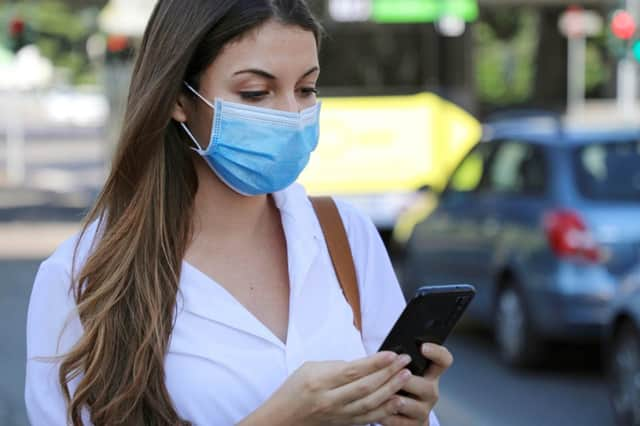Here's how Apple and Google's coronavirus tracking system works, and why the UK isn't using it


Their aim was to create a system using smartphones to trace whether a person has come into contact with someone who has tested positive for Covid-19 and alert them.
Advertisement
Hide AdAdvertisement
Hide AdThe first steps to that plan becoming a reality have been realised with the release of Apple's iOS 13.5 update, which brings the Exposure Notification API to iPhones and iPads.
Here's everything you need to know about it:
How does the coronavirus tracking app work?
The Exposure Notification API isn't actually an app.
Instead, Apple's latest update delivers the relevant code needed for devices to interact with apps developed by third parties like public health authorities.
It's not something that can be access by regular phone users, and won't make any visible difference to the software running on your phone; you likely wouldn't even know it had been put on your device were it not for articles like this.
The initial phase of the roll-out requires users to download apps from public health authorities in order to enable contact tracing on their devices.
Advertisement
Hide AdAdvertisement
Hide AdApple say that public health bodies like the US' Centres for Disease Control and Prevention have already requested access to the API.
"In the coming months", Apple and Google plan to do away with the need for dedicated apps and bake "a broader, Bluetooth-based contact tracing platform" into their operating systems directly.
How does digital contact tracing work?
Digital contact tracing uses radio transmitters inside smartphones to establish other phone owners the user's come into contact with - the same way that phones and other devices send out Bluetooth signals to seek devices to connect with.
If person A and person B have a 10-minute conversation in the street, their phones will be exchanging anonymous identifier codes that change every 15 minutes.
Advertisement
Hide AdAdvertisement
Hide AdBoth handsets are scanning for IDs, and will register each other and store that information locally on each device.
A few days later, person A tests positive for Covid-19 and enters into a healthcare app that they're infected. With their consent, their phone will push all the IDs their phone has registered as having come across in the past 14 days to the server.
Person B's phone will have been checking the server for positive beacons from their past 14 days, meaning they'll receive a notification from the healthcare app letting them know someone they've been in contact with has tested positive for the virus and linking them to further information about symptoms, how to self-isolate etc.
Is it safe?


Google and Apple's new system has been praised for the lengths it goes to to preserve user privacy.
Advertisement
Hide AdAdvertisement
Hide AdThe companies are using Bluetooth over location or GPS data to enable greater privacy, alongside concealing the identity of the contact.
The contact matches are also determined locally on the device, rather than sent to a central server.
When a phone pushes information to servers run by the health organisations across the world, it appears as a series of randomised numbers, making it less likely governments can use the data to conduct surveillance.
The apps will ask the user's permission to participate in the tracing service, allowing the user to opt out of sharing their proximity info either temporarily or permanently.
Why isn't it being used in the UK?
Advertisement
Hide AdAdvertisement
Hide AdThe feature might not be used for contact tracing in the UK.
The NHS confirmed it would be using its own centralised system over the decentralised approach favoured by the tech companies, despite fears its methods will not be as secure or efficient.
The first contact tracing app was trialled recently on the Isle of Wight, but presented technological issues and sparked ethical debate.
It creates a centralised database of contacts at odds with the privacy Apple and Google have been at pains to emphasise.
Advertisement
Hide AdAdvertisement
Hide AdHealth Secretary Matt Hancock has insisted that all data collected by the app is stored securely and deleted as soon as it is no longer needed to trace the possible spread of coronavirus.
But a second smartphone app to trace the spread of Covid-19 is being produced, a new application that will instead incorporate the technology provided by Google and Apple.
It is being developed “in parallel” with the first app so that politicians can easily substitute it in if needs be, the Financial Times reported.